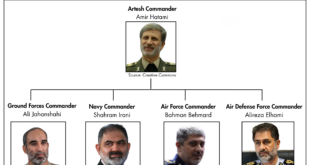 TEHRAN (Fars News Agency)- Two International Atomic Energy Agency (IAEA) inspectors arrived in Iran on Tuesday.
TEHRAN (Fars News Agency)- Two International Atomic Energy Agency (IAEA) inspectors arrived in Iran on Tuesday.
Despite a recent parliament approval allowing government to revise cooperation with the International Atomic Energy Agency, Tehran continues cooperation with IAEA and in the latest case two of the agency’s inspectors arrived here on Tuesday.
The said approval was issued in reaction to the UN Security Council Resolution 1737 against Iran and its nuclear activities.
During their one-week mission, the two inspectors are due to visit Isfahan’s UCF plant.
The visit of the IAEA inspectors falls within the safeguard agreement of the Non-Proliferation Treaty (NPT) and is viewed as the Agency’s routine inspections of nuclear sites.
Iran’s nuclear activities are fully supervised by the IAEA inspectors and cameras, and Tehran is observing the rules and contents of the NPT Comprehensive Safeguard Agreement in full.
The IAEA chief Mohammad ElBaradei recently approved Iran’s new uranium enrichment tests and equipments, and said that “Iran’s second cascade of centrifuges has been installed and is ready to start work.”
Despite intense propaganda by the US and some EU countries, the regular visits of the International Atomic Energy Agency inspectors to the Iranian nuclear sites and installations further illustrates Iran’s transparent cooperation with the IAEA.
In addition, all Iran’s nuclear activities are also supervised and recorded by the IAEA cameras installed in all Iranian nuclear sites and centers.
So far an unprecedented figure of over 2000 person/day inspections have been carried out of Iran’s nuclear facilities by the IAEA and all inspection reports, including those presented by the IAEA Director-General Mohammad ElBaradei to the UNSC and Board of Governors, are in confirmation of Iran’s continued adherence to the IAEA and NPT rules and regulations.
A recent US Senate report alleged that Iran’s nuclear capabilities are far more advanced and beyond the information revealed to the IAEA or gained by the US intelligent agencies.
The US Senate has claimed that Iran is enriching uranium with the purity level needed for the manufacture of nuclear weapons at Natanz nuclear plant.
The report was strongly censured by the IAEA in such a way that the UN nuclear watchdog stressed in a statement issued on September 13 that the US Senate report not only contained wrong and misleading information and data but was also unfounded.
IAEA has stressed that Iran’s nuclear activities, particularly its enrichment programs and activities, are under tight supervision of the Agency, reminding that while uranium must be enriched to a level beyond 90% of purity to be used in the manufacture of nuclear weapons, Iran has so far done the enrichment up to the purity level of only 3.5%.
The Islamic Republic has always stressed its peaceful purposes in developing the nuclear technology, while it has also underlined that it would never give up even an iota of its right of access to nuclear technology.
Iranian President Mahmoud Ahmadinejad last month announced that the country would celebrate stabilization of its nuclear rights during the Ten-Day Dawn (from February 1 to 11).
The Ten-Day Dawn marks the victory of the Islamic Revolution in Iran in 1979, when Iranians embraced final victory in dethroning the last king of Pahlavi dynasty.
Iran is among the only eight world countries which are equipped with the needed technology for producing a nuclear gas product called UF6.
 Eurasia Press & News
Eurasia Press & News
